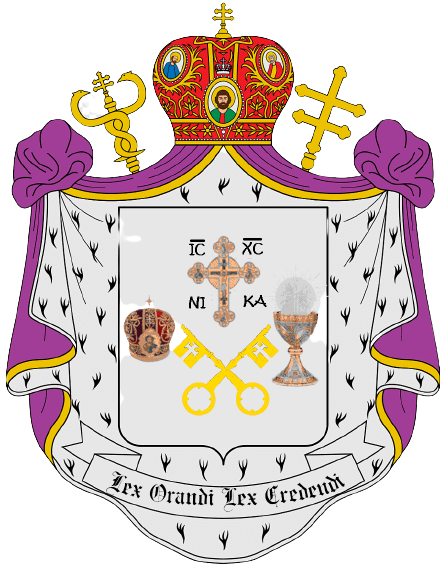worship
-
At present, there are two different Uses available to The Roman Catholic Orthodoc Catholic Church parishes under the Eparchy of the Old Domminion:
Divine Liturgy of Saint Tikhon: This liturgy is currently used by approximately two-thirds of congregations in the Antiochian Western Rite Vicariate. The Rite of St. Tikhon was developed utilizing the 1928 American Book of Common Prayer and the Anglican Missal. The Book of Common Prayer was altered by removing the filioque from the text of the Nicene Creed, and to include prayers for the dead, the invocation of the saints, and strengthening the epiclesis within the Eucharistic prayer, and by adding the pre-communion prayers from the Byzantine Rite. It is utilized primarily by parishes formally of an Anglican/Episcopal background.
Divine Liturgy of Saint Gregory: Utilized by the remainder of the Antiochian Western Rite Vicariate as well as some communities in The Russian Orthodox Church Outside of Russia, this rite is a version of the Roman Tridentine Mass which has been altered to remove the filioque and inserting a Byzantine epiclesis. It is used primarily by parishes formerly of a Lutheran, Roman Catholic, or Old Catholic background, including those incorporated from the Society of Saint Basil in 1961. Additionally, in the Russian Orthodox Church, there are three versions in common use: that of Overbeck (The Overbeck text was printed in full in the 1960 Russian Orthodox Church Outside of Russia yearbook), the Use of Mt. Royal (based upon the Carthusian use, itself adapted from the old rite of Grenoble), and the derivative use of Christminster (Usus Providentiae) which includes an epiclesis from the Gothic Missal.
Novus Ordo. The Novus Ordo is short for Novus Ordo Missae, which literally means the "new order of the Mass" or the "new ordinary of the Mass." The term Novus Ordo is often used as shorthand to distinguish the Mass promulgated by Pope Paul VI in 1969 from the Traditional Latin Mass promulgated by Pope Pius V in 1570. When Paul VI's new Roman Missal (the liturgical book that contains the text of the Mass, along with the prayers for each celebration of the Mass) was released, it replaced the Traditional Latin Mass as the normal form of the Mass in the Roman Rite of the Catholic Church.The Traditional Latin Mass was still valid, and could always be celebrated under certain circumstances, but the Novus Ordo became the form of the Mass celebrated in most Catholic churches.
